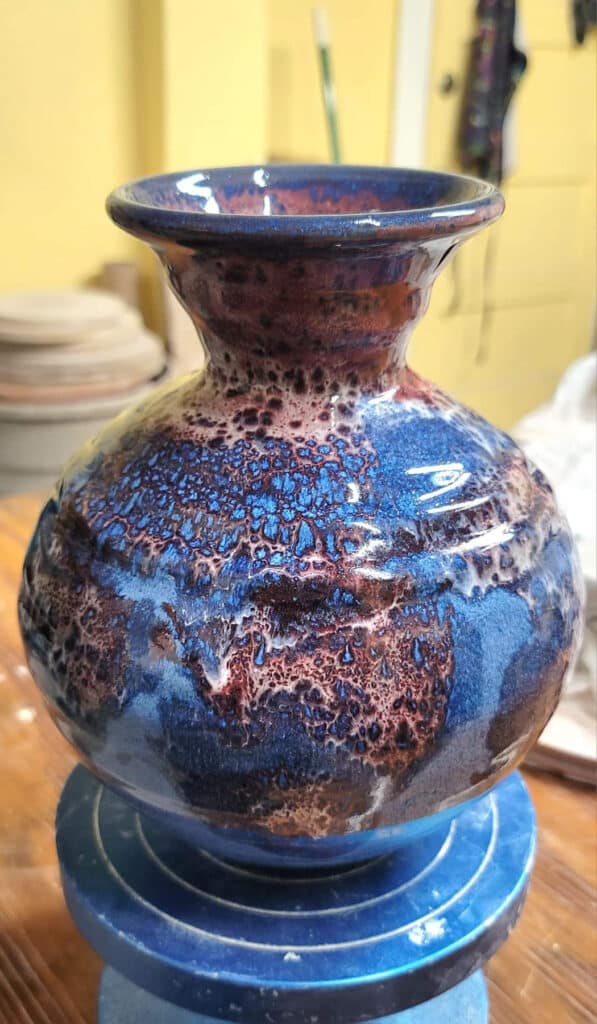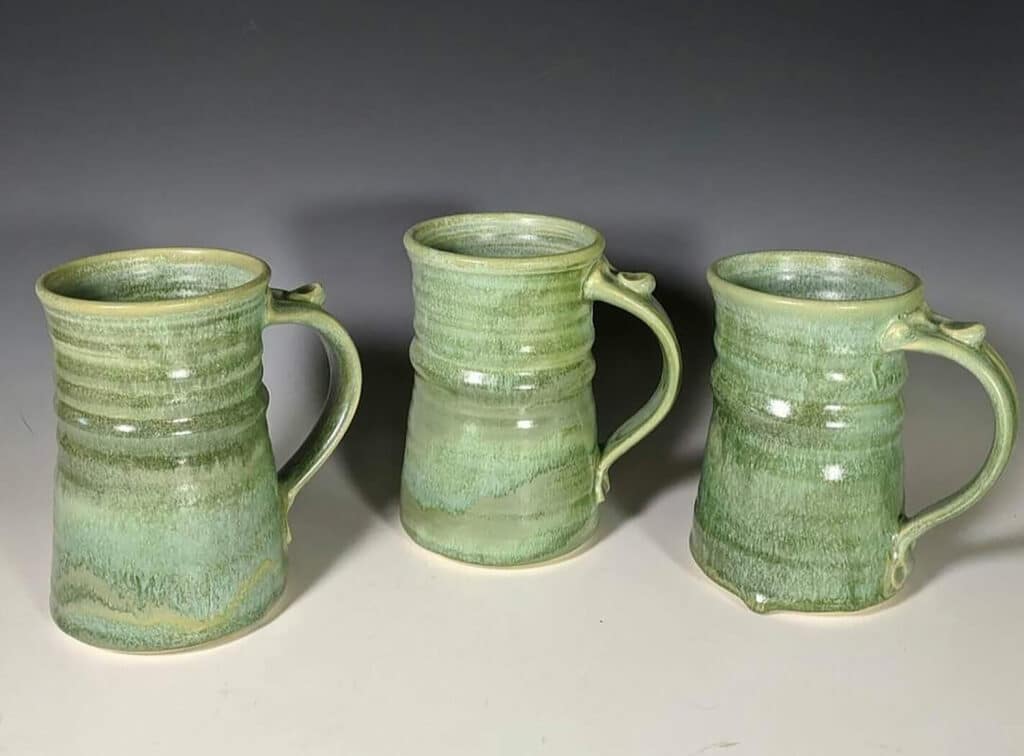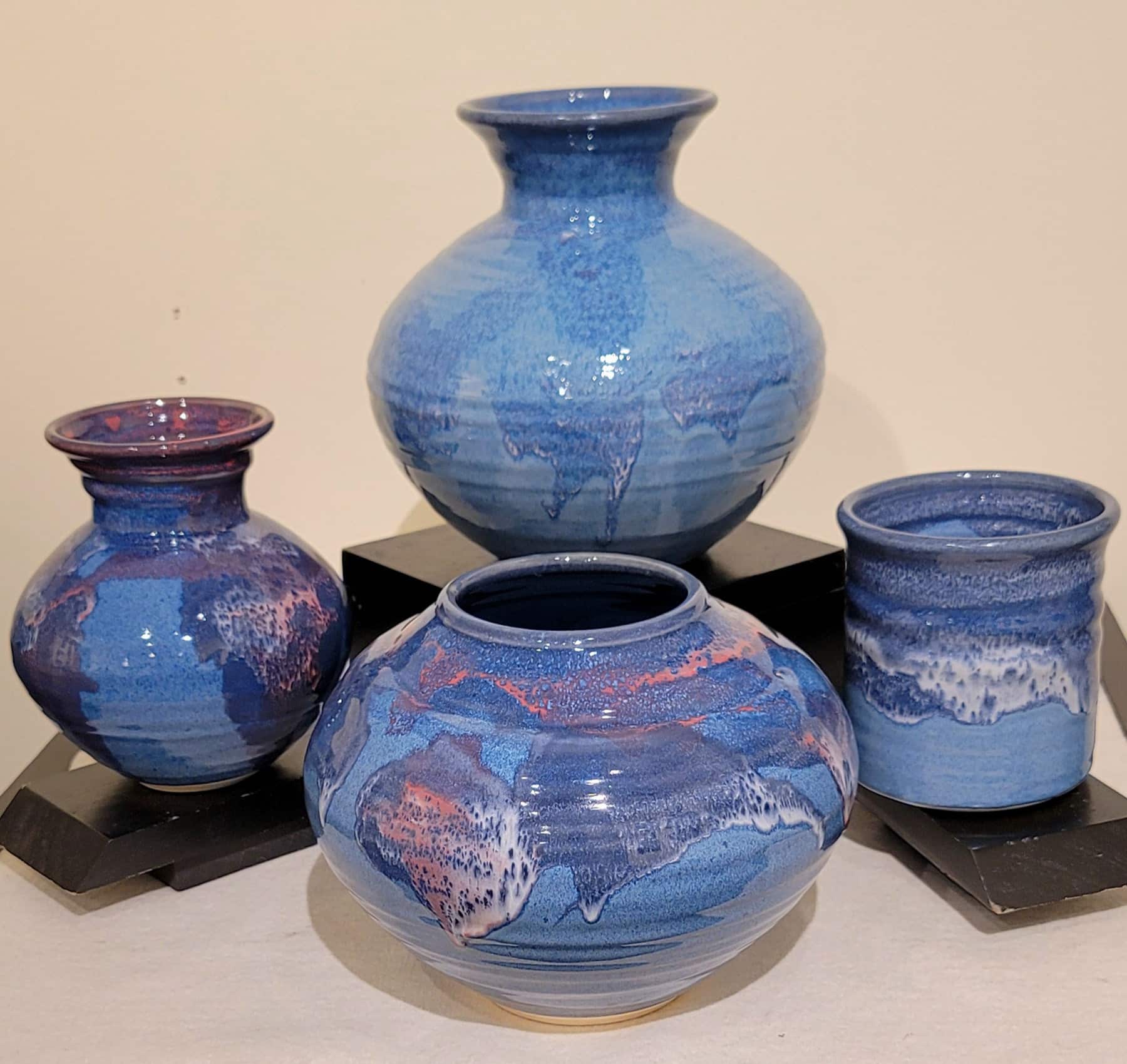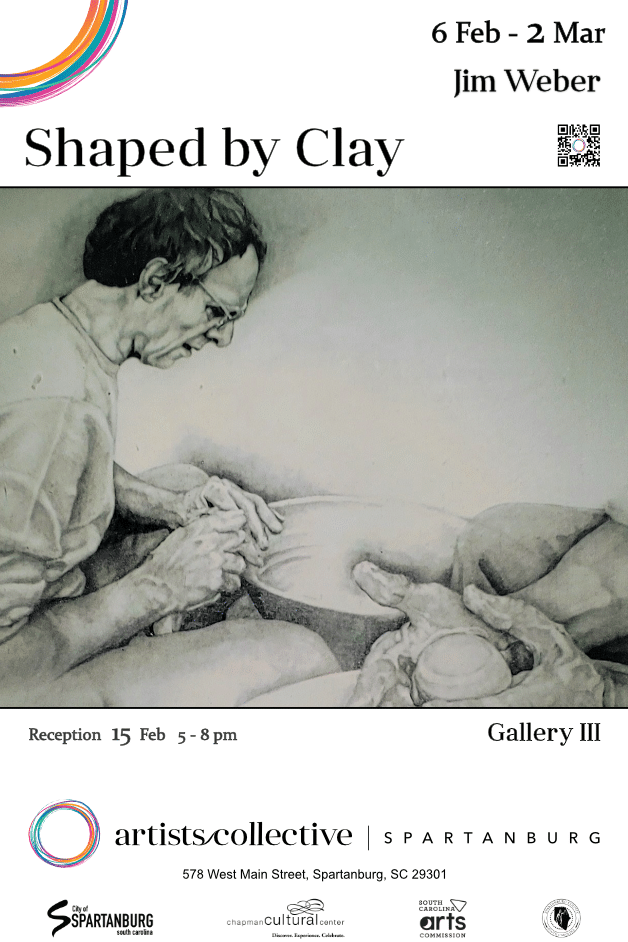Upstate potter Jim Weber doesn’t consider himself an artist, but many of those who own some of his works may disagree, choosing to display their pieces in their homes or offices as decorative art. Weber will exhibit his “traditional utilitarian and decorative” pottery Feb. 6 through March 2 in “Shaped by Clay: Clayshaper Jim Weber” in Gallery III of the Artists Collective | Spartanburg.
An artist’s reception will be held Thursday, Feb. 15, as part of ArtWalk Spartanburg.

“I am not an artist,” Weber emphasizes. “I’ve been a potter for over 50 years, nearly 40 of those full-time.”
Making those utilitarian pieces – mugs, bowls, plates, pitchers and vases – Weber says he approaches his work “more as an ‘engineer’ than as an ‘artist.’ While many of my pieces are chosen to fill a space as a decorative object, the fact remains that it is a secondary aspect of my pottery.
“It is apparent to makers that simple objects that function well also are pleasing to the eye in form,” he continues. “‘Form follows function’ is a truth that we know. I’m a better man for my years as a potter. My ‘form’ has absolutely followed my ‘function.’ I learned all that I needed to know from my potter’s wheel.”
As visitors view the numerous pieces in the exhibition, including vases and a table set with dinnerware, Weber hopes they see them as “pretty and useful” and that they will see “a lifetime of skills-gaining” as well as come away with an appreciation for “well-crafted pottery.”
“These are some of the best pieces I’ve ever turned,” he says.
Weber says he was “born an old, but not bent, potter” in Greenville, South Carolina, which he notes is “clay country.”
“My arrival in this area post-dated the decline, and eventual failure, of the local pottery industry by a matter of a few decades,” he notes. “The tradition of hand-turned pottery for household and industrial needs ran strong there for most of two centuries. As the world turned toward modern industry, so it turned away from the artisans and craft masters who had supplied the people their needful implements of the day, including pottery. By the time I was born, virtually all of the pottery-making families had left their traditional skills or lost them as they took on new skills and traditions.
“All of these factors and considerations contributed to a very young Jimmy Weber – me – seeing a local potter demonstrate his skills at a local arts festival,” he continues. “The community would have to survive one less fireman, or policeman, or doctor or whatever. I was going to be a potter.”

Weber says his pots are, for the most part, “vessels.”
“The potters of my earlier memories made traditional, utilitarian sorts of pots. Those influences coupled with my geographic location and its historic implications, shaped me into the potter I am today as surely as I shape my own work.”
He adds that “function, form and color” are his primary considerations when potting. “I rarely embellish or sculpt artistic designs as an act of creative composition. I use clay more as a building material than as a canvas on which to paint – less artist, more engineer. The trend in pottery today seems to me to lean heavily toward objects of art, which happen to be made of clay, with increasingly less emphasis on traditional utilitarian forms. While I celebrate the former, I regret the loss of the latter.”
Weber has taught pottery for the past 25 years to “all comers,” including small children as young as 4 years old and to older adults as old as 89. He teaches two classes for those 55 years old and older at the Senior Action center in Greenville.
“I have regularly demonstrated my craft as an act of sharing, much as I saw the demonstration when I was a young child,” he says. “There is a long, but straight line, from those first ‘sharings’ in my community, when I was too young to remember from year to year how much I enjoyed the potter and his wheel, to the classes I’ve taught and the demonstrations I give. It has been more than 50 years since my first class and almost 60 years have passed since that first demo at a local art festival.
“I am now nearly the potter I once thought I’d be,” he adds. “I am blessed.”
Weber says he’s glad to be a part of the Artists Collective | Spartanburg making his pottery and showing his works. “I love the Collective. I don’t know that I’d be making pots and teaching pottery at all right now if not for the Artists Collective.”
The works in the exhibition will be available for purchase, with prices ranging from $10 to $300.


